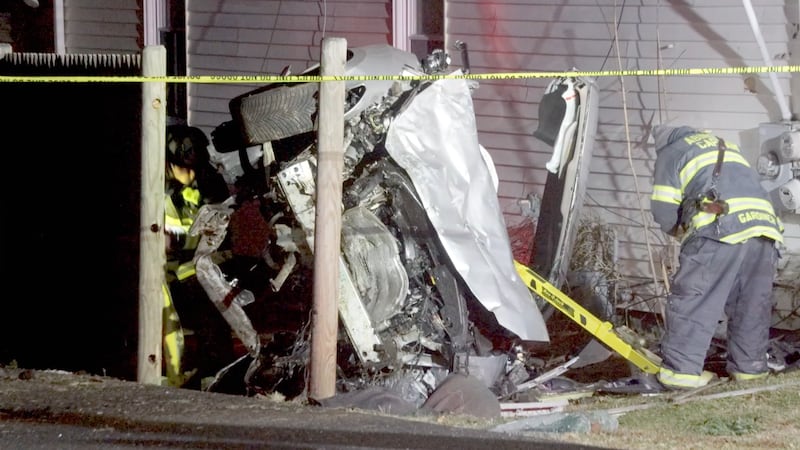WORCESTER, Mass. — For most patients, the diagnosis and surgical treatment of an early-stage cancerous lung tumor is a drawn-out process.
“At about 99 percent of the hospitals in the country, they come in for a bronchoscopy, they have a biopsy and then the diagnosis takes about a week or so,” said Mark Maxfield, MD, a thoracic surgeon at UMass Memorial Health. “Afterwards, they come back and have a meeting with the surgeon to talk about surgery and then they have to go schedule the surgery and wait another two weeks or three weeks or four weeks.”
This is not only arduous for the patient -- but frequent visits mean more money spent on healthcare.
But at UMass Memorial Health they’ve been using a different approach for about a year now: diagnose and remove cancerous lung tumors all in one morning. The procedure is called RODAT.
“It’s a robotic, one anesthetic diagnosis and treatment,” said Maxfield. “The idea here is someone who has a concerning lung nodule, they come in and all in one setting they get a bronchoscopy, a diagnosis, and then potentially surgery if it’s malignant.”
This means once the patient is sedated they aren’t woken up until, potentially, the cancer is removed. The whole process takes around three to four hours.
“From a patient perspective, coming in and having two different procedures on two different days -- it’s a lot for patients to go through that,” said Maxfield.” We were the first in New England to do it and there are just a handful of centers in the country that have figured out how to do it.”
RODAT is most suitable when a prior CT screening scan -- something recommended annually for smokers and recent quitters age 50 and older -- detects a suspicious nodule. This is usually Stage One lung cancer. But Maxfield said on rare occasions Stage Two tumors can also be treated using RODAT.
The procedure is not suitable for advanced lung cancer. Unfortunately, 70% of lung cancers diagnosed in the U.S. have reached Stage Three or Four. That annual CT screening would, no doubt, reduce that number -- but Maxfield said it’s believed fewer than 10% of those eligible for such screening are getting it.
UMass Memorial Health invited Boston 25 News to observe a RODAT procedure this week -- the patient was a 67-year-old woman. Her CT scan showed a blueberry-sized tumor deep in her right lung. Unfortunately, imaging alone can’t determine malignancy -- but she was an excellent candidate for the RODAT procedure.
It begins with the pulmonologist, in this case, Rahul Sood, MD, performing a bronchoscopy -- to both view and biopsy the tumor. This part of the procedure involves threading a fluoroscope several feet through tiny lung passages.
“With the robotic bronchoscopy procedure, we can get much deeper into the lung tissue than we were able to do with prior equipment,” Sood said. “Once we get to the nodule we take small pieces of it.”
Those pieces are then rushed down to Dr. Andrew Fischer, a pathologist -- who will help turn around a diagnosis in about 15 minutes using advanced techniques. His challenge in this case: the first microbiological sample did not prove definitive either way.
“We have to be extremely careful on these cases,” he said.
Subsequent samples clarified the patient’s situation -- clearly showing early-stage adenocarcinoma of the lung.
“The good news in this case is it’s a relatively indolent tumor and it was caught at absolutely the earliest point in time,” Fischer said.
During this entire period, the patient remained under sedation -- on stand-by, so to speak, in case the tumor had to come out.
That task was left up to Maxfield, who controls the robotic aspect of the procedure from a console. On a screen, tiny scissors, gauze and even a marking pen are seen guided robotically into the pulmonary cavity. And then, suddenly, there is the tumor -- and Maxfield begins the excision.
“If this patient were at another institution besides UMass, it would still be another delay of weeks to months perhaps, before she would actually have her cancer resected,” said Fischer. “She going to have that resected today and probably go home tomorrow.”
The five-year survival rate for Stage One lung cancer ranges from 70 to more than 90% -- but drops dramatically as cancer progresses.
The lesson, Maxfield said -- get screened annually if you are or were a smoker.
“Lung cancer CT screening scans are one of the best screening tools we have for preventing and identifying cancer early,” he said.
This is a developing story. Check back for updates as more information becomes available.
Download the FREE Boston 25 News app for breaking news alerts.
Follow Boston 25 News on Facebook and Twitter. | Watch Boston 25 News NOW
©2023 Cox Media Group





